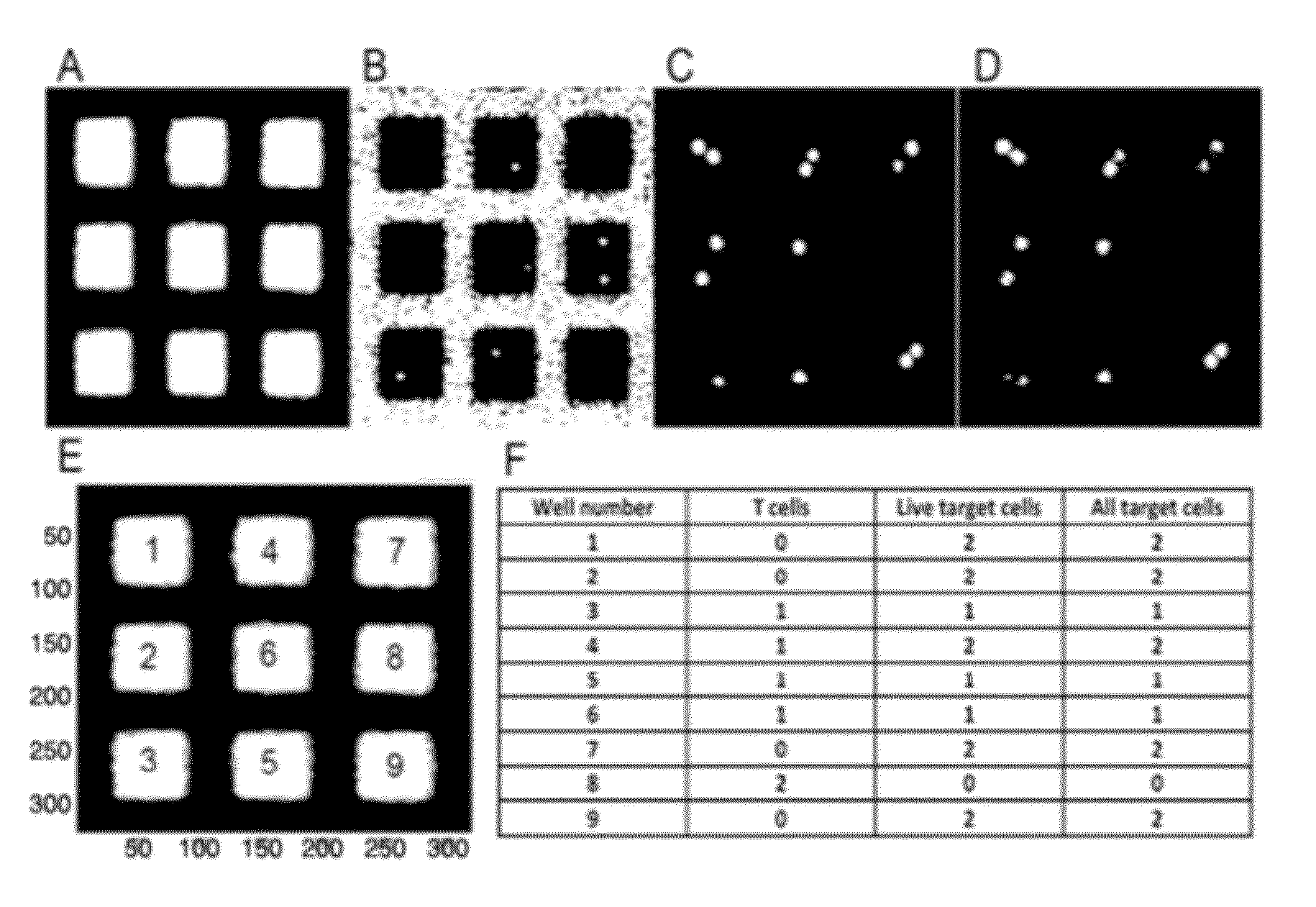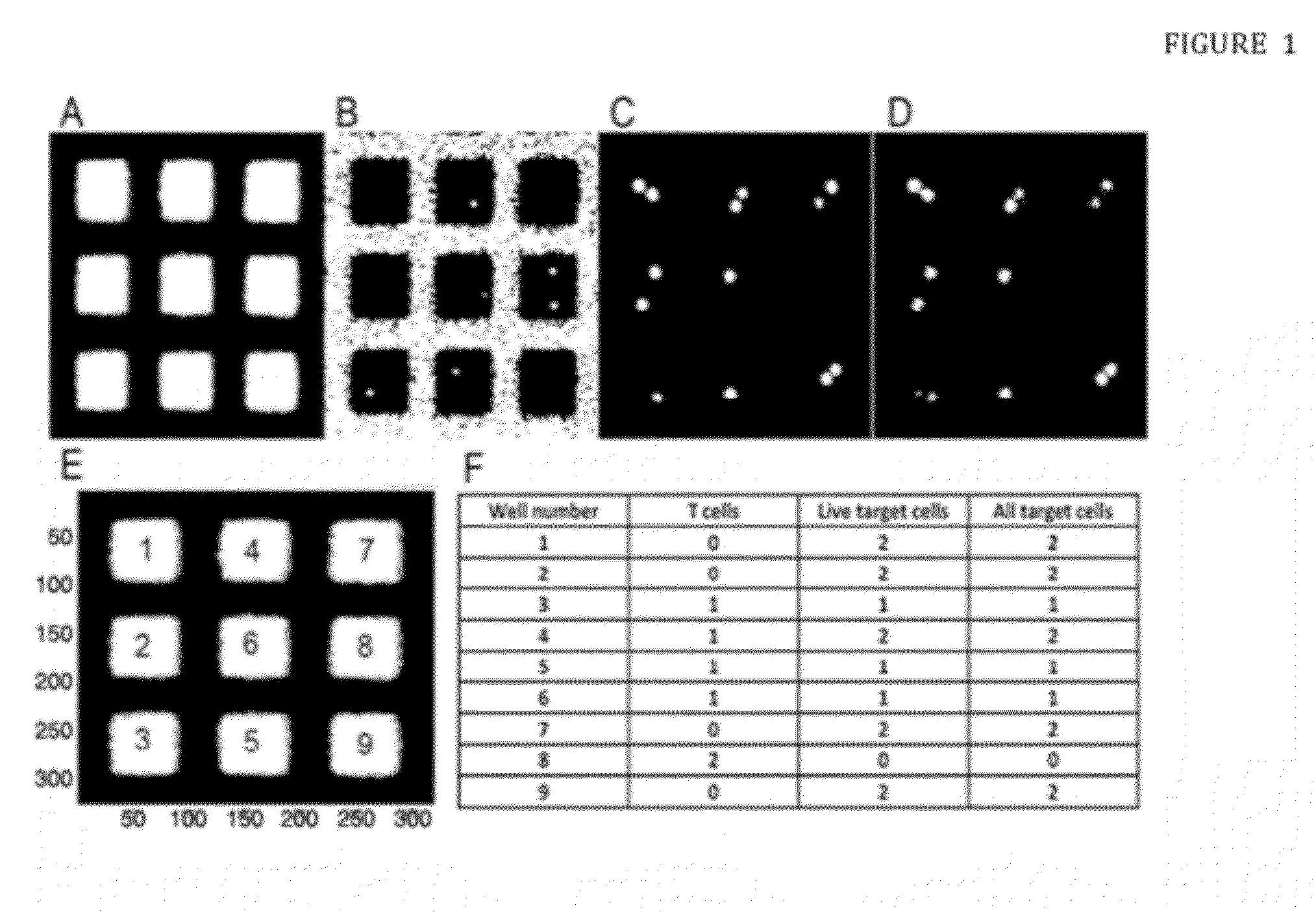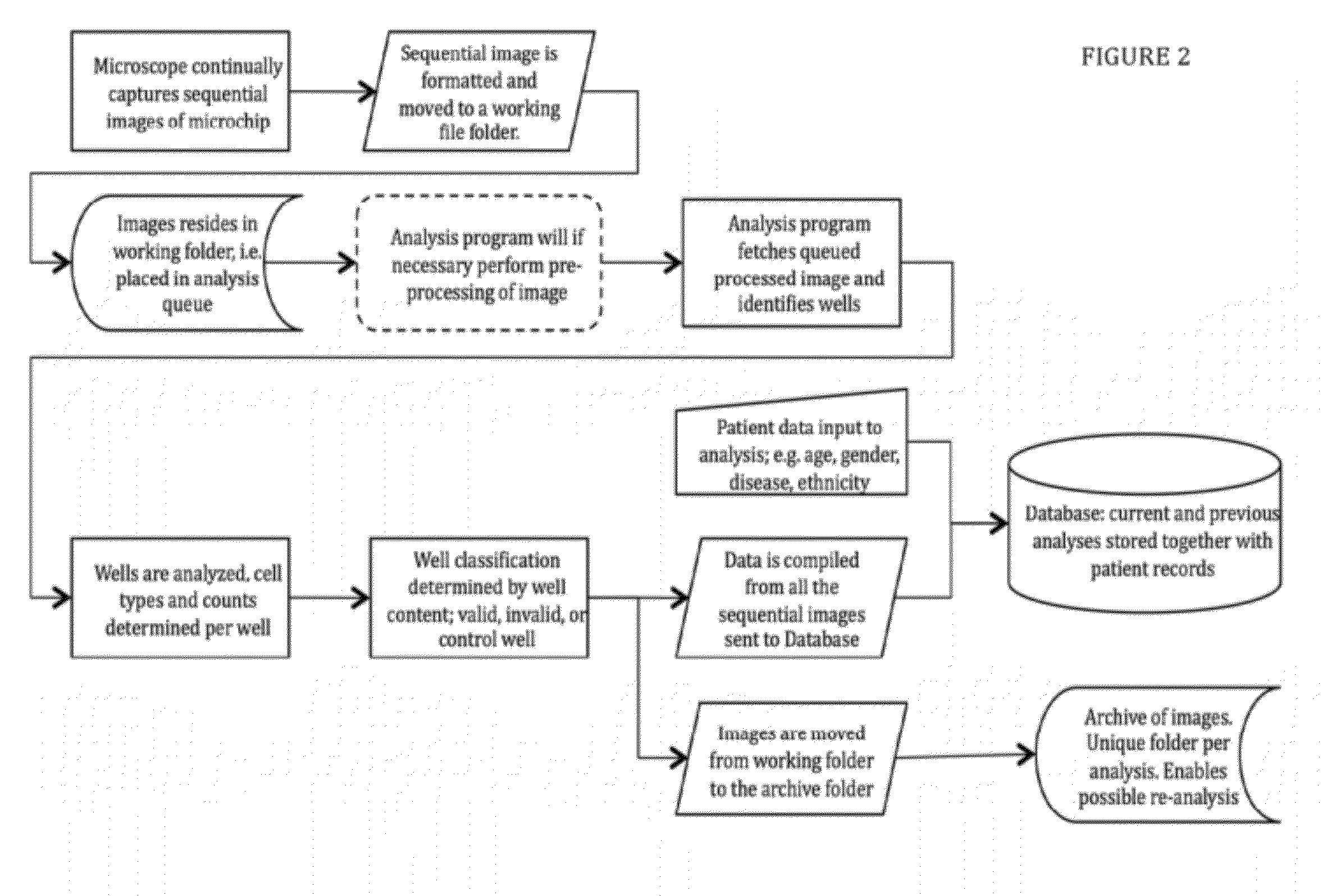System and Method for Detecting and Quantifying Active T-cells or Natural Killer Cells
a technology of active t-cells and natural killer cells, applied in combinational chemistry, chemical libraries, instruments, etc., can solve the problems of high mortality rate, undesirable use of immuno-suppressants, loss of essential immune function, etc., and achieve no or limited adverse effects
- Summary
- Abstract
- Description
- Claims
- Application Information
AI Technical Summary
Benefits of technology
Problems solved by technology
Method used
Image
Examples
example 1
Screen for Alloreactive Cells
[0102]In order to obtain a proof of concept, the donor and recipient cells used were miss-matched in 3 out 6 major HLA alleles (considering HLA-A, HLA-B and DRBI). This is a higher degree of miss-match compared to the real transplantation setting where seldom more than 1 miss-matched major HLA allele is allowed. The advantage in using a higher degree of miss-match for this experimental setup is that the frequency of reactive T cells will be much higher facilitating the detection and quantification of these specific killing T cells.
[0103]To obtain T cells, 20 ml of peripheral blood was drawn in two 10 ml heparinized collection tubes. Blood was diluted 1:1 in phosphate-buffered saline (PBS) prior to a 20 min separation of peripheral blood mononuclear cells (PBMCs) by Ficoll density gradient centrifugation at 400 g without brakes. The PBMCs were collected and washed by diluting in PBS and centrifugation for 10 min at 400 g force...
example 2
[0113]This example illustrates the steps that follow example 1, where identified specific T-cells from analysis are desired to be isolated, expanded and injected into a patient, e.g. In the case of cell therapy.
8. T Cell Harvesting.
[0114]After analysis, wells with specific cytotoxic T-cells will have been identified. Without damaging the T-cells, these are extracted from their respective wells. For increasing chance of success and cell survival when isolating the T-cells, the cells may be left in the wells to proliferate for some time before extraction. Examples of harvesting methods are by optical or acoustic traps or by magnetic labeling and extraction as known in the art, such as a micromanipulator.
9. T Cell Expansion
[0115]The specific effector cells are transferred to culture flasks containing RPMI-medium with added L-glutamine, streptomycin, penicillin, 10% human AB sera and recombinant IL-2. In order to stimulate growth of the effector T-cells, magnetic beads coupled to stimul...
example 3
11. Microchip Design Criteria and Considerations
[0117]When designing the chip dimensions one should consider different aspects such as to maximize the cellular interactions, to be able to contain sufficient nutrients, deep enough to prevent escape or movement of the cells between wells and biocompatibility; optimization of the washing steps.
[0118]The microchip enabling the present invention should meet specific design requirements as follows:
[0119]Medical or Statistical Demands[0120]useful number of cells, range 104 to 1.5×106 [0121]yield after seeding, range 25% to 85%[0122]plausible number of positive cell-cell interactions, range 2 / 10 000 to 100 / 10 000
[0123]Optical Demands[0124]transparency, range from IR over optical visibility to UV[0125]optical path, range from 150 μm to 200 μm[0126]flatness, range max + / −0.1 μm
[0127]Biological Demands[0128]biocompatibility, range max 3 weeks cell survival[0129]well depths for capturing, range 100 μm to 1 mm, resulting in sedimentation time 10...
PUM
 Login to View More
Login to View More Abstract
Description
Claims
Application Information
 Login to View More
Login to View More - R&D
- Intellectual Property
- Life Sciences
- Materials
- Tech Scout
- Unparalleled Data Quality
- Higher Quality Content
- 60% Fewer Hallucinations
Browse by: Latest US Patents, China's latest patents, Technical Efficacy Thesaurus, Application Domain, Technology Topic, Popular Technical Reports.
© 2025 PatSnap. All rights reserved.Legal|Privacy policy|Modern Slavery Act Transparency Statement|Sitemap|About US| Contact US: help@patsnap.com



